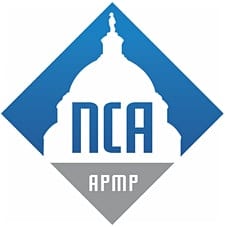This article was originally published May 4, 2022 on Team Patri’s blog – https://gopatri.com/pro-insights/2022/5/03/go-no-go-decisions-101.
Go/No-Go Decisions 101
Professional poker players say the most crucial factor to their success is knowing when to play a hand and when to fold it. Poker players look at the available information, calculate the odds of success, and use this data to make quick decisions to play or pass.
Similarly, the best proposal managers would tell you that the most crucial factor to their success is knowing when to pursue or pass on a Request for Proposal (RFP) opportunity. Just like the best poker players, the best-performing companies evaluate every RFP opportunity to determine its likelihood of success and use this data to make quick, informed decisions for pursuit.
In the world of bids and proposals, deciding whether or not to pursue an opportunity is known as a Go/No-Go Decision. With a disciplined and well-designed Go/No-Go Decision Process, companies can improve their qualification, increase win rates, and waste less time and resources on poor-fit opportunities. This article explains what a Go/No-Go Decision is, why it’s so important, and how to implement it at your company.
What Is a Go/No-Go Decision Process?
A Go/No-Go Decision Process (also sometimes called a Bid/No-Bid Decision Process) is a process for deciding whether or not a company should pursue an opportunity. Most frequently, Go/No-Go Decisions are utilized in Business Development, Capture Management, and Proposal Management to formalize pursuit decisions around potential bids and proposals.
The best Go/No-Go Decision Processes will have each of the following qualities:
- A clear, documented process that everybody can reference
- A single, final decision point
- Buy-in from the team
- Expectations for what data, narratives, and other input will be required from the team
- A standard timeline for a decision
Why Is It Important?
Every RFP pursuit has an opportunity cost. Not only will dozens of hours be spent on every response, diverting employees from key responsibilities and initiatives, but in addition, every additional RFP response necessarily means less time the proposal team can spend improving their other responses. In other words, the opportunity cost of every pursuit is not only dozens of labor hours, the cost of printing, packaging, and any hired consultants, and the loss of time spent on critical initiatives, but it also includes lowering the win rate of other proposal responses in progress. With every proposal response representing a significant opportunity cost, companies must be diligent in qualifying their proposals, so they only pursue the best opportunities.
In addition, RFPs generally have tight deadlines. Proposal teams must turn high-quality content around quickly and work to customize it to the prospect’s specific needs to generate winning bids. Given the tight timelines, a quick decision for pursuit is necessary for proposal development to be high quality. Companies without a Go/No-Go Decision Process can often spin in circles trying to make a decision, and by the time they make a final decision – it can be too late! With the deadline fast approaching, crafting a winning proposal becomes extremely difficult.
A Go/No-Go Decision Process solves both of these problems. First, they represent a disciplined, data-backed decision process for qualification that enables companies to make intelligent investments in pursuit. Second, they save precious time by expediting the decision process, allowing employees to spend more time on their key responsibilities.
For these reasons, every company that responds to bids and proposals should have a documented Go/No-Go Decision Process. Below, we detail some of the key components of sound Go/No-Go Decision Processes.

How to Implement a Go/No-Go Decision Process at Your Company
1. Have a final decision point
A strong Go/No-Go Decision Process should always have clear decision points. Most companies will have one person or a small council as the only decision point. Others might have an escalation point if there is disagreement on a decision or if the opportunity is worth more than a certain threshold.
However you design your process, make sure there exists a final decision point, after which no decision can be challenged. Clarity around final decisions is essential to operate with speed and trust.
2. Pick the right person/people as decision-makers
The point of a Go/No-Go Decision Process is to make intelligent decisions about pursuit. As such, it’s essential that the decision-makers in the process have the proper incentives, so they will make decisions that are right for the company’s holistic health.
Some questions to ask yourself include the following:
- What are the structural incentives for possible decision-makers?
- Are they compensated based solely on revenue, or are they compensated for broader company health metrics like profitability or efficiency?
- Do they tend to be too aggressive or conservative about pursuit?
The ideal decision-maker would have incentives tied to multiple aspects of the company’s health. If that doesn’t exist in your company, forming a small decision council can often make sense. For instance, it might make sense to have a decision council consisting of a sales manager, who will think about revenue implications, someone from the finance team, who will think about cost and risk, and a manager of proposal resources, who will think about the labor required for the response and how it will affect other key initiatives.
3. Choose and track the right data
The most effective Go/No-Go Decision Processes help decision-makers make more informed qualification decisions by presenting the proper statistics and metrics.
Modern processes utilize technology to analyze the expected cost, the opportunity fit, and the expected profit of opportunities. Technology enables stakeholders to put real numbers and data behind qualification to improve decision-making, and it also enables consistent evaluation based on hard evidence and clearly defined criteria.
At a minimum, the following information should be presented to decision-makers:
- Opportunity fit score (a quantitative representation of the fit of the opportunity to your company)
- Potential contract size
- Estimated labor hours of response
- Estimated dollar cost of response (labor hours x cost of average resource)
- Estimated cost of implementation if the bid is won
- Total expected profitability
4. Define and document the entire process
Once you have decided on the final decision point, the right decision-makers, and the proper data, it’s time to chart out the entire Go/No-Go Decision process, from how opportunities are sourced to how they are evaluated to how they are decided.
Documenting the process is essential to establish clear expectations for how the process will run.
5. Establish SLAs for Timeline and Buy-In
As critical as a well-designed process is buy-in from the team to accept the results of the process. The purpose of a Go/No-Go Decision is to serve as a final decision point, so teams don’t spin in circles waiting for decisions. Even the best-designed Go/No-Go Decisions can be undermined by team members trying to go around the decision or involving other executives to overturn the decision. After the process has been designed, all parties should explicitly agree for their opportunities to be governed by it.
In addition, the decision-makers should have a clear understanding of the expected timeline of their decisions. Historically, many companies will set a quick meeting to make a Go/No-Go Decision. But more recently, companies are utilizing technology to communicate key information, make the go/no-go decision, and communicate it to the team. However you choose to structure the process, make sure there is a clear timeline so responses don’t get bogged down, waiting for decisions.
6. Communicate the Go/No-Go Decision to the Team
A strong qualification process means companies can better spend their time capturing high-value opportunities and save money, time, and energy by not pursuing poor-fit opportunities. While this makes the company healthier, not all parties benefit from no-go decisions. In particular, sales professionals, whose compensation relies on revenue capture, are often disappointed by no-go decisions. For this reason, it’s essential to have a well-defined process that makes transparent how decisions are made.
Moreover, communicating no-go decisions to the team is a crucial art that can help soothe interdepartmental tensions. When communicating no-go decisions, it’s important to be thorough in identifying the reasons the proposal didn’t fit the qualification process, bolster the decision by citing the data and metrics that informed decision makers’ opinions, and give credit to the sales or business development professional for their work in cultivating the relationship that led to identifying the potential proposal.

Wrapping it Up
Like success in poker, success in proposals is entirely contingent on choosing the right opportunities in which to invest your resources. The best-performing companies understand that every opportunity has a cost, and therefore, that efficiency means investing in the right opportunities while avoiding the wrong ones.
Well-designed Go/No-Go Decision Processes are a crucial tool for strong qualification. Without them, too many bad-fit opportunities are pursued, sapping time, energy, and money away from higher-value opportunities and initiatives. A strong Go/No-Go Decision Process should be clear and transparent, designate decision-makers with proper incentives, and feature data and metrics representing efficiency and overall company health. And when a decision is finalized, it should be communicated to the team in a way that emphasizes the thoroughness of the qualification process and the company-wide benefit of strong qualification and strategic proposal pursuit.
Strengthening Your Go/No-Go Decision Process with Technology
In the past, Go/No-Go Decisions were deliberated in long email chains and only adjudicated when someone took the initiative to call a meeting. Most companies relied on narratives from account managers as to whether the opportunity was promising rather than objective metrics that would indicate success. The result was that Go/No-Go Decisions often reflected the organization’s pre-existing biases, resulting in suboptimal pursuit decisions that cost time, distract employees from key responsibilities, and lose revenue.
Now, the most effective companies, like OpenGov, utilize technology to streamline their Go/No-Go Decisions, inform them with relevant data, and communicate them to the team. Patri Score is one such solution. Patri helps companies move past subjective and purely qualitative Go/No-Go decision-making by providing a data-backed qualification tool that provides one central location to register opportunities, discover their fit score based on data-science backed assessments, make Go/No-Go Decisions, and effortlessly communicate them to the team.






Leave A Comment